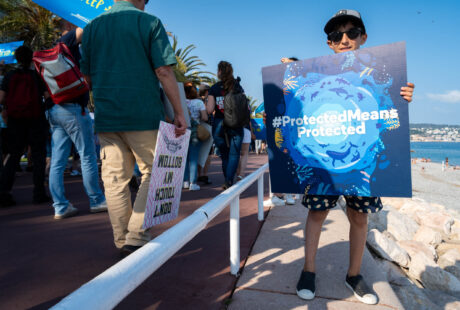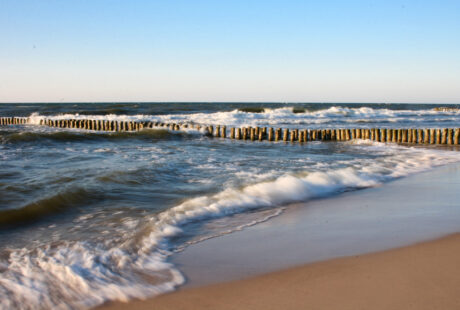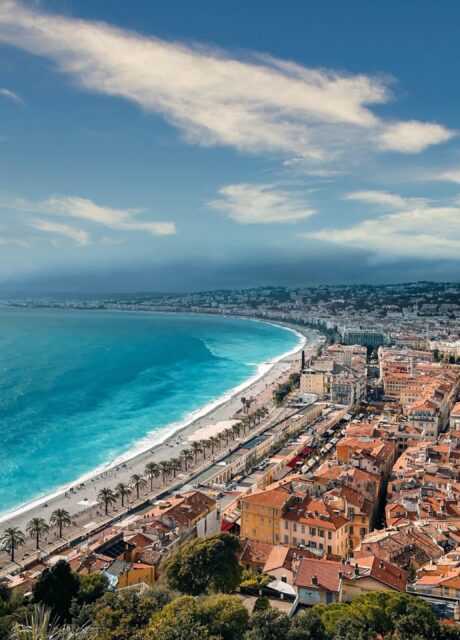European NGOs ClientEarth, Sciaena, Seas At Risk, The Fisheries Secretariat, and Our Fish react to this year’s proposal from the European Commission for 2020 fishing quotas in the North-East Atlantic, saying it finally takes some important steps in the right direction by proposing long overdue cuts for several vulnerable stocks. However, the NGOs also stress that this should have happened a long time ago, and that the proposal does not go far enough to restore all stocks above sustainable levels in line with the requirements of the Common Fisheries Policy (CFP), and meet the now imminent 2020 deadline to end overfishing. (1)
“As guardian of the EU treaties, the Commission should lead on fast and decisive progress to meet the 2020 deadline to end overfishing, not suggest to set several stocks above scientific advice like sole, hake, and cod. It is simply not acceptable” said Goncalo Carvalho, Executive Coordinator at Sciaena (2).
“We acknowledge the Commission’s effort in proposing considerable cuts for some stocks, but the bottom line is this should have been the year the Commission proposed all TACs in line with science to honour the EU deadline to end overfishing by 2020,“ Andrea Ripol, Fisheries Policy Officer at Seas At Risk said.
The proposal will be serving as a basis for the upcoming December Council discussions where EU fisheries ministers will set the final quotas for 2020. This year the stakes are higher than ever as EU’s own legal deadline to end overfishing by 1st January 2020 is fast approaching – making this year the last and final year for ministers to set quotas in line with the requirements of the Common Fisheries Policy (CFP) and meet the crucial EU deadline in time. (3)
ClientEarth fisheries science and policy advisor Jenni Grossmann says of the proposal: “Today’s proposal is by no means perfect but shows that the Commission is ready to take a step in the right direction, by proposing certain quotas, for example for Celtic Sea haddock, below the scientific advice, in order to safeguard other vulnerable stocks taken as bycatch in the same fisheries.” (4)
The Commission’s proposals for Hake in several areas of the North-East Atlantic have raised concerns among the NGOs (5). Even if they are set under what is allowable by the Multiannual Plans, fishing above the maximum sustainable yield, I.e. the maximum amount of fish that can be removed from a stock indefinitely’ -carries significant risks of overexploiting these stocks and pushing them below safe biological limits in the near future.
In 2019 over 40 percent of TACs for the North-East Atlantic were still set higher than scientific advice provided by the International Council for the Exploration of the Sea (ICES) (6). Still, the European Commission’s proposal is suggesting around 30 stocks in the North-East Atlantic to be set above scientific advice, according to a preliminary analysis from the NGOs.
“This year’s negotiations on catch limits (TAC’s) for North-East Atlantic fisheries, including the North Sea, are decisive for Fisheries Ministers to deliver on the 2020 deadline, rebuild the North Sea cod populations, and put an end to one of the greatest threats to our ocean – destructive overfishing,” said Jan Isakson, executive director of The Fisheries Secretariat .
The recent publication of the Intergovernmental Panel on Climate Change (IPCC) Special Report on the Ocean and Cryosphere in a Changing Climate (SROCC) predicts severe declines in European fisheries production and highlights the need to alleviate all other stressors on ocean ecosystems, specifically, ending overfishing to help restore fish populations and increase ocean resilience. (7)
“The recent IPCC report was a wake up call for governments across the world – the ocean is our life support system and protects us against climate breakdown, but it can’t keep doing that if we do not urgently eliminate other key stressors,” said Rebecca Hubbard, Program Director of Our Fish.
“In light of this clear call to climate action, and the Commission’s stated ambition to deliver a new Green Deal for Europeans – a simple first step is ensuring all fishing limits are at the very least in line with the best available scientific advice,”Hubbard continued.
Notes
- The European Commission’s proposal for fishing limits for 2020 covers a total of 72 stocks in the North-East Atlantic. Proposal for a COUNCIL REGULATION fixing for 2020 the fishing opportunities for certain fish stocks and groups of fish stocks, applicable in Union waters and, for Union fishing vessels, in certain non-Union waters COM/2019/483 final, 24. October 2019: https://eur-lex.europa.eu/legal-content/EN/TXT/?qid=1571921091573&uri=COM:2019:483:FIN Press release from the European Commission: https://ec.europa.eu/commission/presscorner/detail/en/ip_19_6151
- Examples of Stocks where the Commission is proposing a decrease in the TACs, but still above the scientific advice: Sole (40% below 2019 TAC; 28,% above scientific advice for 2020 – 8cde, 9, 10 & Union Waters of CECAF 34.1.1) Cod (68% below 2019 TAC; 122% above scientific advice – 7a, Hake (21% below 2019 TAC; 7-8% above scientific advice for 2020 – 3a & EU Waters of, SDs 22-32; EU Waters of 2a & 4; 6 & 7 & EU & International Waters of 5b; International Waters of 12 & 14
- The reformed Common Fisheries Policy (CFP) includes the fundamental objective to progressively restore and maintain fish stocks above sustainable levels, specifically above levels capable of producing the maximum sustainable yield (‘MSY’, see Article 2(2) of the CFP Basic Regulation, Regulation (EU) No 1380/2013 of the European Parliament and of the Council of 11 December 2013). For the purpose of achieving this ‘MSY objective’, the law says that the MSY exploitation rate shall be achieved by 2020 at the latest for all stocks. Moreover, the CFP is clear that measures should be taken in accordance with the best available scientific advice (Article 3(c) of the CFP Basic Regulation).
- Examples of stocks where the Commission is proposing TACs lower than the scientific advice are; Haddock (- 34,9 %, 7b-k, 8,9 and 10; Union waters of CECAF 34.1.1), Plaice (-12,7 %, 7f and 7g), Plaice (- 50,5%, 7a), Plaice (-22,7 %, 7d and 7e), Common Sole (- 11,7 %, 7f & 7g), Common Sole (- 18,5 %, 7a), Common sole (- 1,1 %, 3a; Union waters of Subdivisions 22-24), Common sole (-2,7 %, 8a and 8b), Anglerfish (- 1,0 %, 8a, 8b, 8d and 8e), Anglerfish (-4,1% 8c, 9 and 10; Union waters of CECAF 34.1.1), Norway lobster (-31,0 %, 3a), Norway lobster (-6,8 %, Union waters of 2a and 4), Lemon sole (-60,1 %, Union waters of 2a and 4), Whiting (-3,2%, 8). FAO fishing areas definitions: https://ec.europa.eu/fisheries/sites/fisheries/files/docs/body/fishing_areas_en.pdf
- 22. October 2019, Joint NGO recommendations on the setting of North-East Atlantic fishing opportunities for 2020: https://www.fishsec.org/app/uploads/2019/10/191022_Joint-NGO-recommendations-on-the-setting-of-Northeast-Atlantic-fishing-opportunities-for-2020.pdf.pdf
- Pew Charitable Trusts (2019) – Analysis of Fisheries Council agreement on fishing opportunities in the north-east Atlantic for 2019: https://www.pewtrusts.org/en/research-and-analysis/articles/2019/09/23/eu-fisheries-management-improves-but-still-lags-behind-scientific-advice
- Intergovernmental Panel on Climate Change (IPCC), 2019, Special Report on the Ocean and Cryosphere in a Changing Climate (SROCC): https://www.ipcc.ch/srocc/home/
The Time is up initiative:
Time is up! – Let´s #EndOverfishing is an initiative to ensure compliance by the EU with its legal obligation to end overfishing by 2020. The founding members are Client Earth, The Fisheries Secretariat, Our Fish, Sciaena and Seas At Risk, but work with a growing number of European NGOs across the EU.
Posted on: 28 October 2019


